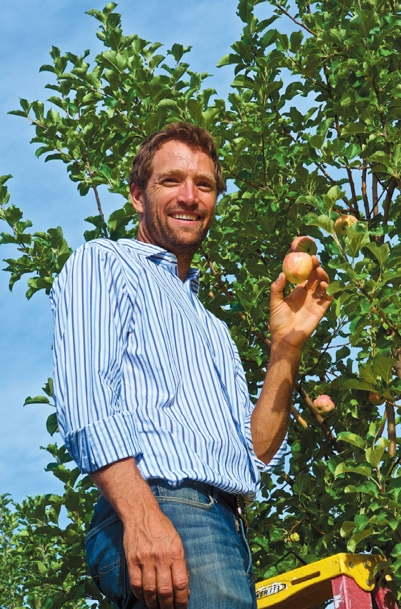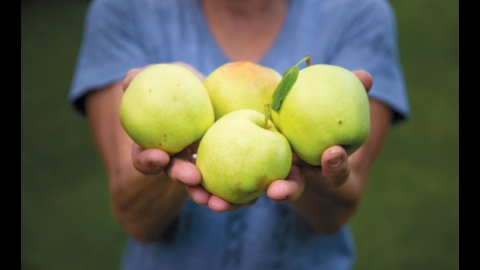Saving Our Heritage One Scion at a Time
Tierney Routson of Stoic Cider tells this story:
“We scrambled down a rocky hillside with pruners, masking tape and markers. It’s early afternoon and we are on a mission to collect historic apple scion wood. The March air is warm and we’re excited to be on another apple salvation adventure. We scraped through the thicket at the bottom of the hill-slope to an oasis of fruit trees—apples, pears, quince, plums—all planted in the rich bottomland along Big Bug Creek outside of Prescott. Originally a large thriving orchard planted by gold miners around 1900, these gnarled old trees are barely clinging to life. They have already surpassed the expected century lifespan.
“Kanin had his collecting list in hand. He did genetic research on these trees for his master’s thesis and now we were there to collect live fruitwood. Kanin had documented these old trees as Winter Banana, Westfield Seek-No-Further, Wagener, King David and Liveland Raspberry. He also discovered genetically unusual trees found nowhere else. It was the preservation of those unique and unknown apple trees that we were after.
“Many of the ancient trees had died since our last visit. Broken branches were everywhere. We searched for the tiny numbered tags Kanin had left during his research. And we collected the prized cuttings, being careful to properly label each twig. When grafted onto a mother tree these twigs would be the new beginning for the endangered variety. At the end there was one tree missing: Big Bug 159, extremely rare and genetically unique. When we found it, our spirits sank. The tree was dead, broken and flattened on the ground. The past winter had been its last.
“When we looked closer we saw the tree, broken at the base was drying and dying upward. The top of the tree was still alive! We chose the healthiest branches and took all of the cuttings we would need to ensure viable grafted new trees.
“Upon returning home, Kanin and Cody unwrapped those Big Bug 159 cuttings and grafted a dozen young apple trees. We watched these new scions flourish, rooted securely in our orchard nursery. These genetically unique Southwest heritage trees got a second chance at life and escaped sure extinction.”








